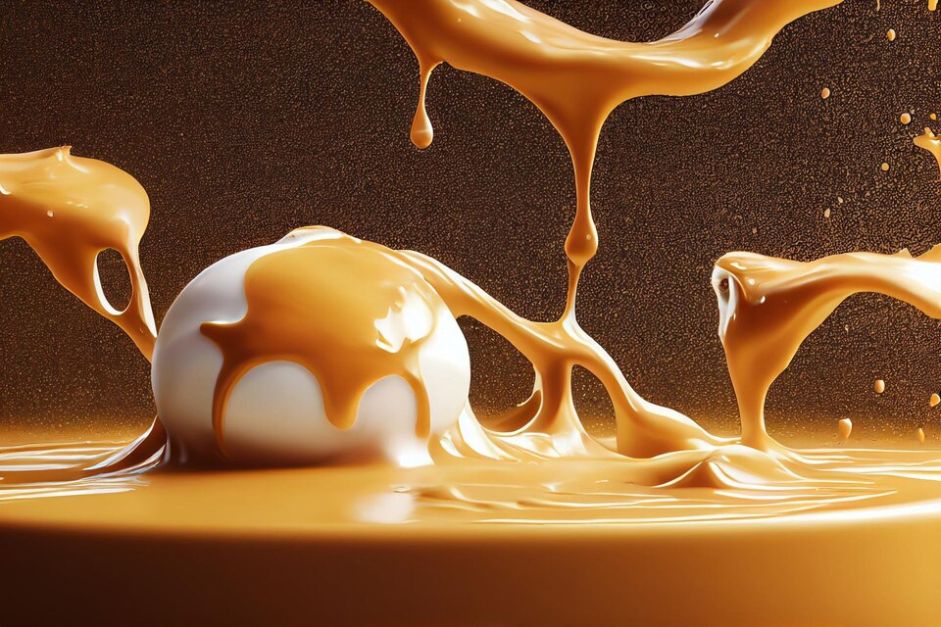 09 Aug 2023
09 Aug 2023
What is caramelization? Discover the series of reactions that take place in sequence when sugar reaches 160°C to make the perfect caramel at home.
If I mention “caramel” it is quite likely that you will instinctively think of sugar. However, you will be well aware that something has to happen for those very sweet granules to become a fluid substance that, in just a few moments turns into a delicious coating with a malted flavour. That certain something consists of a series of reactions scientists love to quote when engaged in explaining chemistry in a way that is fun and mouth-watering.
How to Caramelize Sugar
Let’s start by saying that what we call “sugar”, the common sugar available in supermarkets or which comes in sachets with our coffee, is actually sucrose. It is a disaccharide, in which “di” stands for “two” and indicates the molecular union of two monosaccharides, glucose and fructose.
In nature, at ambient temperature, it assumes a solid state in the form of the crystals we are all familiar with, or as a solution inside plants such as sugar cane or sugar beet. However, if the temperature rises considerably and is well above any temperature to be found in nature, this is where we enter the world of caramelization. This term refers to a series of reactions that take place in sequence, at around 160 °C, and which take us from a white grainy form to a delicious fluid with an unmistakable flavour.

Caramel: Dry OR Wet?
It is at this point of the process that the first Hamletic doubt immediately arises, one which divides the enthusiasts of caramel: dry or wet? The dry method consists in putting the sucrose into a saucepan, while the wet method contemplates dissolving it in water first and pouring the solution into a pan.
Chemically speaking, it makes no difference, because the wet version passes through the evaporation of the water we have added and leaves us with the usual sucrose. The advantage however lies in the fact that this small amount of liquid enables the mixture to be heated more gently and more evenly, without risk of burning. If you feel expert, go ahead with pure sucrose.
Smells Like Sugar Spirit
Whatever your choice, once a temperature of 160°C has been reached, the heat will cause the sucrose molecules to break up into fructose and glucose molecules. These will then be transformed (“by decomposition”) into aromatic molecules. Chemists are not fond of this definition but let’s say that they have earned this name because odourless sugar is used to create a series of very intense aromas. It is all due to these molecules: ethyl acetate (fruity aroma), furans (hazelnut), maltol (roasted aroma) and diacetyl (butter).
If you think about it, the smell of caramel is actually a compound of these aromas! Besides, the formation of these molecules is very variable, and this prevents us from obtaining two identical caramels. There are always minor, yet delicious, differences to savour. In view of the characteristics of sucrose, and the temperature involved, the caramelization process takes place very rapidly.
The Perfect Caramel Recipe
As mentioned above, this can be a great resource for an expert cook, who can turn out a delicious caramel in a few minutes, but an authentic minefield for beginners! For this reason, it is advisable to use the wet method.
It consists in mixing about 150 ml of water with 300 grams of white sugar. At this point, a little hint comes in handy: if you happen to have some, add 100 grams of liquid glucose to stabilize the compound and obtain a caramel that is more fluid, golden, and aromatic. Put everything into a thick-based pan and start to heat.
Mix with a spatula until the sugar dissolves and, from this moment onwards, do nothing but shake the pan without stirring to avoid the formation of crystals or lumps. It would also be advisable to keep an eye on the temperature: once it has reached between 165 and 180 °C, keep the caramel on the heat for no longer than it takes to reach the colour and aroma you desire, without exaggerating.
Turn off the heat and put the pan straight into a basin full of ice. Your delicious caramel is ready.
Read More: The Future Food | Fake Meat
Read More: Food Sustainability - The Need Of The Hour!